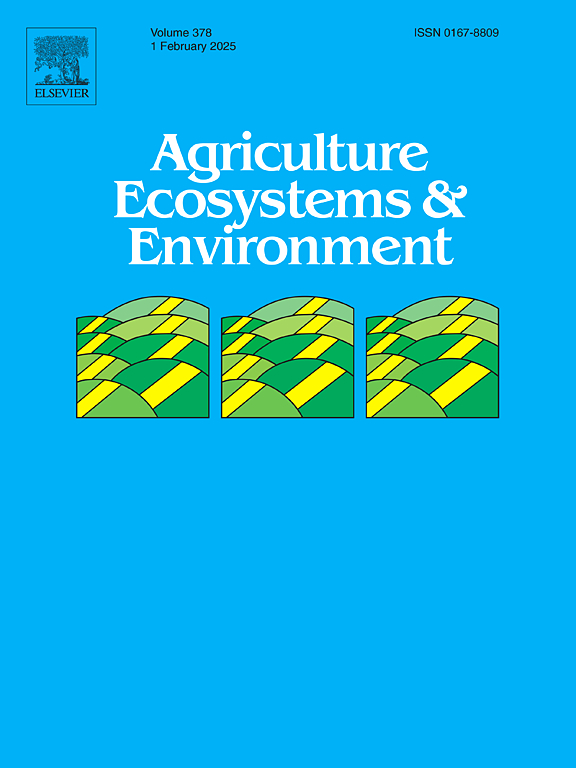Responses of rice paddy dragonflies to fertilisation in a mesocosm experiment
IF 6
1区 农林科学
Q1 AGRICULTURE, MULTIDISCIPLINARY
引用次数: 0
Abstract
Freshwater biodiversity has been decreasing globally, with wetland habitats facing significant loss due to climate change and changes in land use. In Switzerland, over 90 % of low-elevation wetland habitats have been lost since 1850, mainly due to land transformation for agriculture. Recently, farmers started cultivating paddy rice in Switzerland to meet the increasing food demand and to support wetland biodiversity, particularly dragonflies. However, rice is often produced at high fertiliser levels, raising concerns about potentially harmful effects of high nutrient levels on dragonflies developing in rice paddies. Here, we assessed the impacts of nitrogen fertilisers on dragonflies from a conservation perspective. We exposed three dragonfly species to mineral and organic fertilisers at different concentrations in experimental mesocosms mimicking rice paddies. The effects of fertilisation on survival as well as development time and size at emergence were quantified. In total, 77 % of all dragonfly larvae survived until emergence, and survival was not significantly affected by either fertiliser type at concentrations that are used in Swiss rice paddies (ranging from 25 kg N/ha to 150 kg N/ha). Also, there were no negative impacts of any fertiliser type and concentration on emergence time and body size, which albeit differed significantly among the three dragonfly species. The study thus provides valuable and encouraging insights for conservation and management strategies aimed at promoting wetland biodiversity, particularly the diverse and vulnerable dragonflies, through paddy rice cultivation.
中生态试验中稻田蜻蜓对施肥的反应
全球淡水生物多样性不断减少,由于气候变化和土地利用变化,湿地生境面临重大损失。在瑞士,自1850年以来,超过90% %的低海拔湿地栖息地已经消失,主要是由于土地改造为农业。最近,瑞士农民开始种植水稻,以满足日益增长的粮食需求,并支持湿地生物多样性,特别是蜻蜓。然而,水稻通常是在高肥料水平下生产的,这引起了人们对高营养水平对稻田中蜻蜓发育的潜在有害影响的担忧。在这里,我们从保护的角度评估氮肥对蜻蜓的影响。在模拟稻田的实验中,我们将三种蜻蜓暴露于不同浓度的无机和有机肥料中。量化了施肥对成活率、发育时间和出苗期大小的影响。总体而言,77% %的蜻蜓幼虫存活至羽化,瑞士稻田中使用的两种肥料浓度(25 kg N/ha至150 kg N/ha)对存活率均无显著影响。不同肥料类型和浓度对羽化时间和体型均无显著影响,但不同品种间差异显著。该研究为通过水稻种植促进湿地生物多样性的保护和管理策略提供了宝贵和鼓舞人心的见解,特别是多样而脆弱的蜻蜓。
本文章由计算机程序翻译,如有差异,请以英文原文为准。
求助全文
约1分钟内获得全文
求助全文
来源期刊

Agriculture, Ecosystems & Environment
环境科学-环境科学
CiteScore
11.70
自引率
9.10%
发文量
392
审稿时长
26 days
期刊介绍:
Agriculture, Ecosystems and Environment publishes scientific articles dealing with the interface between agroecosystems and the natural environment, specifically how agriculture influences the environment and how changes in that environment impact agroecosystems. Preference is given to papers from experimental and observational research at the field, system or landscape level, from studies that enhance our understanding of processes using data-based biophysical modelling, and papers that bridge scientific disciplines and integrate knowledge. All papers should be placed in an international or wide comparative context.
 求助内容:
求助内容: 应助结果提醒方式:
应助结果提醒方式:


